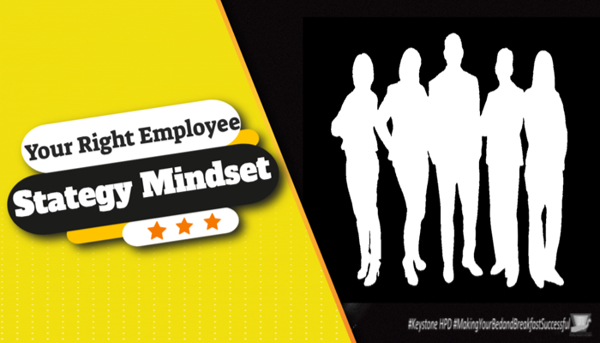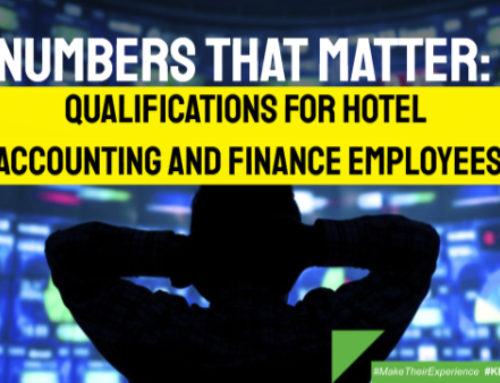.
.
We all know to be successful, you have to have the right strategic mindset but how do you get there?
I’ll give you tips you can use.
Welcome to another edition of Hospitality Property School.
I am your instructor, Gerry MacPherson.
.
Introduction
The past number of years has been an interesting study of hospitality property owners in ways of thinking. Many have had a negative mindset due to the dramatic change in the economy and the hospitality property service culture.
.
So, let us look at the downturn of the economy has an example of how we can change our mindset and that of our employees.
.
After the economy started to fall more than a few hospitality properties failed because they did not keep up with the changes. Low occupancy rates caused belt-tightening to save money and often one of the first effects was employee cutbacks.
.
This was understandable, but quite often the staff that remained had to take on added duties, sometimes duties they were unprepared for.
.
I had seen in many cases, were hotel management did not take the time to retrain the remaining staff. This caused a great deal of stress.
.
When your staff are not properly trained, overworked and stressed, it does not take long for your services to slide.
.
When employees have extra duties and little time, the idea of taking additional time to train does not seem feasible but any property wishing to remain competitive and successful has to make training a top priority.
.
The clientele numbers you are attracting might not be as high as you want or need, but the guests who do you utilize your property, expect good service. This is where management has to take the time to re-interview the staff and determine their strengths and weaknesses.
.
In times of economic slowdowns, you might have seen your staff taking on the duties they had done when they first started. Making this kind of change without proper communication could lead to disgruntled employees. This is where it is very important to hold a staff meeting and explain the situation.
.
You explain that times are tough but your goal is to keep your property open and the remaining staff employed.
.
Most often, employees will be happy they still have a job.
.
It is at this time you have to enforce the importance of teamwork and I don’t just mean the front line employees.
.
It means everybody from the owner down.
.
How will this work? I will tell you, right after a word from our sponsors.
.
Before the break, I said I would tell you how enforcing the importance of teamwork would work.
.
If employees see the owner and management pulling together in all aspects of operating the property, more often than not, a sense of loyalty will shine through and you’ll see everyone putting forth a little extra effort to help the business keep going through the tough times. If you continue to be honest with your employees, sharing how you see the future, it’ll often give them a clear mindset and the desire to help the business through the rough times.
.
It is at times like this, being supportive of your staff is imperative.
Some things to consider:
- If staff have extra duties, don’t be a stickler to an exact time schedule.
.
- Give them the freedom to make decisions when it comes to customer service and back their decisions.
.
- Remain positive
.
As the owner, you will be your employee’s source of inspiration and the best way to show inspiration is by your own personal work habits.
.
.
The work you do & the way you do what it is a reflection of who you are.
- If disorderly at your work, it’s because you’re disorderly inside.
.
- If you’re always late, it’s because you are late inside.
.
- If you are jaded with your work, it’s because you are jaded inside.
.
“If you’re not the role model you wish your employees to follow, how could you start changing your mindset?”
.
What aspects of your life would you like to improve?
Let’s look at some possibilities.
- Do you procrastinate?
.
- Do you fail to follow through?
.
- Are you loud and inpatient?
.
- Do you feel overwhelmed?
.
Many of these traits could be the cause root of drudgery. Often drudgery is not the result of a poor business concept or lack of planning, it might mean you do not have the right strategic mindset.
Planning and developing activities is imperative to your business’s success: forecasting, budgeting, projecting sales and revenue, staff planning are all important to meet your business commitments.
But they do not mean your business will prosper.
You have to be in the right mindset, a strategic mindset.
.
.
The word “strategy” makes many people nervous. I’ve had many owners tell me when they think of business strategy, they think of countless hours working on details, loads of research and numerous meetings. To develop a strategic mindset does not require all that. You can take an hour today to start and then embrace it over time.
.
We have all heard that it’s important to live in the moment and in certain situations that is true. That it is not helpful when thinking of your business. For your business to be successful you have to have a vision.
.
What is your business going to be like next year, in five years, in 10 years?
.
You must have broader goals and any day-to-day decisions should relate to both your immediate business and your long-term goals.
.
Let me say that again, a strategic mindset gets you thinking about how your business decisions today will impact your business in the future. Thinking daily about your strategic mindset, allows you to grow and change logically. You don’t intend to reach a strategic goal today but instead, get a step closer to it.
.
.
Here is where you start
Use these 6 steps to establish a strategic mindset for your business planning and tasks. Spend only 10 minutes on each step. (it is a good idea to do the first two steps together).
Repeat the process once or twice a month and you will rapidly get beyond urgency and into a strategic way of thinking.
.
.
The 6 steps to a strategic mindset
.
Step 1: What Do I Want My Business to Become?
As I said, don’t spend a lot of time on these exercises, take 10 minutes or less and write down a 1- to 2-sentence answer to this question. Be specific, but not detailed; for example, you might want to become the hospitality property of choice in your region.
You don’t have to think of the details such as marketing budget, revenue targets and room design. Instead, describe your target market and why they should choose your property to stay.
If you like, you can share this answer with friends and/or colleagues. Watch their reactions, listen to their ideas or suggestions and adjust your answers to echo the best ideas. It is important to use your wisdom here, you don’t have to include everyone’s ideas or suggestions.
Once you’re happy with your answers, you now have a goal, you have a vision statement, a vision you can work towards. It is important you check in regularly.
.
.
Step 2: What is My Business?
In 10 minutes or less write down what your business is and does. Again, in a short paragraph, consider these topics when answering.
- Who is your clientele?
.
- What services or products will you provide?
.
- Are you going to stay at your current location or are you going to expand?
.
- What makes you distinctive from your competitors?
.
- What are your values or philosophy, both business and personal?
.
- What is your commitment to the use of new technology?
.
This brief paragraph is your map to reaching your vision: the vision is now your mission statement. It will help you focus on how you plan to achieve that vision (big picture).
Again, share this statement with your friends and colleagues, and watch their reactions, listen to their ideas or suggestions and using your wisdom to adjust your answers. When you feel comfortable with your statement, you have to consider it on a day-to-day basis.
When considering changes or adjustments in your business, your mission statement helps you know when to say “yes” and when to say “no.”
.
.
Step 3: Set a Goal
Give yourself a couple of minutes of quiet time, close your eyes and visualize your business as it will be in the future:
- How did you get there?
.
- What steps did you have to take to achieve that vision?
.
- What kind of research and planning did it require?
.
- Will you have to make any changes to reach your goal?
.
Try to be exact when thinking of your vision.
These questions will help you outline the path required to reach your vision.
In a few moments, you should have an idea of your goal and the basic ideas of how you are going to make it happen. If you like, you can again ask for input.
.
.
Step 4: Implement Your Goal
This might sound a little fast from going from a vision to action, but it’s important to prove your visions can succeed. Select one of your ideas, one of your goals and start to implement it.
Decide what you need to accomplish this task, decide who you are going to need or what vendor is required to help and discuss the possibilities.
If your vision is clear, don’t let anyone’s initial “no” discourage you.
You are now taking the first steps to action, planting the seeds in other minds, and setting the steps toward your goal.
.
.
Step 5: Gage and Evaluate Your Progress
What do you have to do to implement your goal?
It is important to stay on top of each step.
Gage and evaluate your progress.
You can measure your progress by communicating with others, reviewing any relative data, and it’s okay to go with your gut.
Don’t spend a lot of time evaluating each step, just a couple minutes will do.
Remember, you’re taking small steps to support something larger. Taking a couple of minutes to measure in the beginning allows you to test your footing.
.
.
Step 6: Revisit
If you have taken only the allocated 10 minutes to do each of the five phases, then in less than an hour you have you’ve created a vision and mission, set a strategic goal that supports the statement, acted on it and measured your action.
.
That is very impressive!
.
So, is that it?
.
Do you have the right strategic mindset?
.
Not just yet.
.
.
This is an exercise to a way of thinking about your business, a way of seeing and doing that you carry into your daily work.
.
Does this make sense? Let me know in the comments
.
Okay, take 10 minutes to review what you’ve done and answer the following questions.
- Do your vision and mission still ring true?
.
- In developing a strategic goal to support those statements, did you identify potential improvements to your vision and mission?
.
- Can you realistically act in a step-by-step fashion toward your goal?
.
- Can you measure that action and its progress?
.
Make any adjustments that you would deem necessary.
.
Once you’re happy with all the steps, you can use them as a template to help you to form a habit of tackling your business’s future with each activity you engage in.
.
Clearly, I realize that some strategy sessions will take longer than the one-hour exercise you have done here. However, by using these steps a few times and becoming comfortable with the process, it will be of incredible benefit when it comes to major strategizing for your business.
.
.
In conclusion
If you have a clear vision of whom you are and what your business is, as well as the steps you need to take to achieve your goals, you will not be dragged down into the pool of drudgery but instead, you will be an inspiration to both your employees and customers.
.
A clear and strategic mindset will enable you to keep your head up, take new actions and move your business forward. By making these changes a permanent and formal part of your operation, your business will grow as you take great strides toward reaching your vision.
.
So you might ask “How can I use this mindset strategy to demonstrate the importance of even the most menial tasks in our day-to-day operation?”
.
Share with your employees the different steps and how they work to achieving the goal.
.
Show them how even the most menial work can be a piece of art when done by an artist.
.
Show them how they can look at each job, each task as one with a goal, and by reaching this goal gain a sense of pride.
.
Every job, every task, is important to the vision of your property and every employee’s contribution is important to reaching your goals.
.
There is no such thing as undesirable work, but there could be employees who see certain kinds of work as undesirable.
.
By relaying the importance of every job and giving your staff an opportunity to shine, they will stop looking at their work as punishment but instead as an opportunity to see themselves as they really are.
.
Now it’s time to start working on your goals.
.
Even during these crazy times, do you feel you have the right mindset to be in the hospitality property industry? Let me know in the comments..
.
In the next episode, I will be talking about coping with stress.
.
.
That’s it for today’s episode,
Until next time, have a fun day.
.
.
PS. Did you see the latest INNsider Tips episode? If not, make sure you sign up in the notes section so you don’t miss any.
.
.
⇒ TO READ OR LISTEN TO THIS EPISODE ON KEYSTONE HOSPITALITY PROPERTY DEVELOPMENT:
https://keystonehpd.com/your-right-employee-strategy-mindset-ep-208
.
.
Get Your INNsider Tips
https://keystonehpd.com/Sign-up-for-INNsider-Tips
.
.
Join one of your private groups
https://keystonehpd.com/private-groups
.
.
Say hi on social:
Facebook: https://www.facebook.com/KeystoneHDC
.
Twitter: https://twitter.com/KeystoneHDC
.
Linkedin: https://www.linkedin.com/company/keystone-hospitality-development
.
.
Listen to The Hospitality Property School PODCAST here:
https://keystonehpd.com/itunes-podcast
https://www.spreaker.com/keystonehdc
.
.
YouTube
.
.
A Division of Keystone Hospitality Property Development
.






